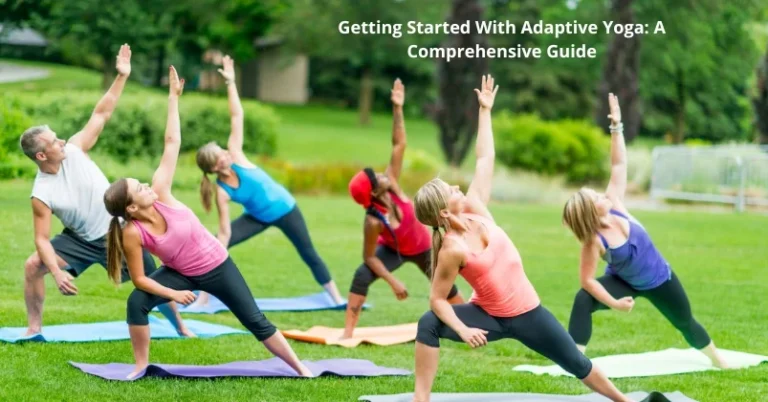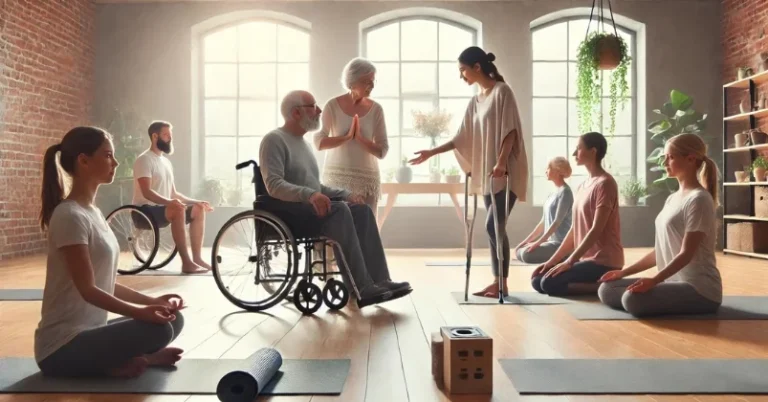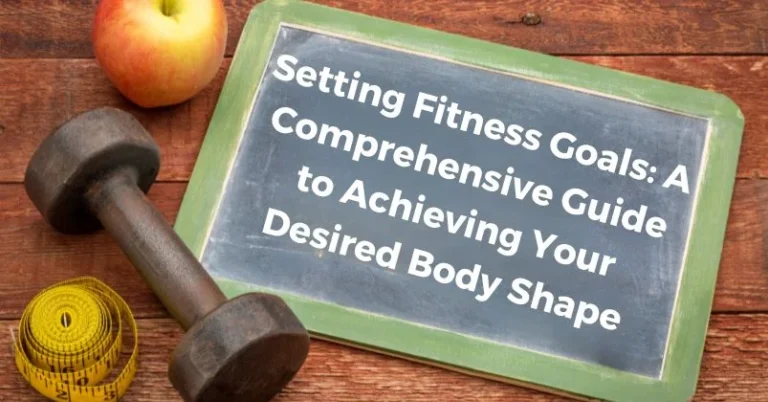Exercise Benefits: How Physical Activity Improves Your Health
Exercise is an essential component of a healthy lifestyle. It offers numerous benefits that can improve your physical and mental well-being. Regular exercise can help you maintain a healthy weight, build muscle and strength, improve your cardiovascular health, and boost your mood.
The Basics of Exercise involve engaging in physical activity that increases your heart rate and breathing rate. There are many types of exercise, including aerobic, strength, and flexibility exercises. Aerobic exercise, such as running or cycling, can improve your cardiovascular health and endurance. Strength training, such as lifting weights, can help you build muscle and improve your metabolism. Flexibility exercises, such as yoga or stretching, can improve your range of motion and reduce your risk of injury.
Key Takeaways:
- Exercise is an essential component of a healthy lifestyle that can improve your physical and mental well-being.
- The Basics of Exercise involve engaging in physical activity that increases your heart rate and breathing rate, including aerobic, strength, and flexibility exercises.
- Regular exercise can improve your cardiovascular health, build muscle and strength, boost your mood, and help you maintain a healthy weight.
The Basics Of Exercise
Exercise is any physical activity that requires effort and is done to improve or maintain health and fitness. It can be as simple as walking or as intense as weightlifting. Regular exercise can provide numerous benefits for your physical and mental health.
Physical activity is any movement of the body that requires energy expenditure. It can include activities such as walking, running, swimming, cycling, dancing, and more. The key is to move more and sit less. Even low-impact activities like yoga, squats, and planks can be beneficial for your health.
The gym is a popular place to exercise, offering a wide variety of equipment and classes. However, you don't need a gym membership to exercise. You can exercise at home or outdoors with little to no equipment.
Running is a popular form of exercise that can be done almost anywhere, from a treadmill to a park. It can improve cardiovascular health, increase endurance, and burn calories.
Walking is a low-impact exercise that can be done anywhere and is suitable for all fitness levels. It can improve cardiovascular health, strengthen muscles, and reduce stress.
Swimming is a low-impact exercise that is easy on the joints and can improve cardiovascular health, muscle strength, and flexibility.
Cycling is another low-impact exercise that can be done indoors or outdoors. It can improve cardiovascular health, increase endurance, and strengthen leg muscles.
Dancing is a fun way to exercise that can improve cardiovascular health, coordination, and balance. It can also be a social activity and a way to relieve stress.
Strength training, such as squats and planks, can improve muscle strength and endurance, increase bone density, and improve posture.
In conclusion, exercise can provide numerous benefits for your physical and mental health. There are many different types of exercise to choose from, and you can do them almost anywhere with little to no equipment. The key is to find an activity that you enjoy and make it a regular part of your routine.
Muscle And Strength Benefits
Regular exercise has numerous benefits for the body, including improving muscle mass and strength, preventing muscle loss, and promoting strong muscles and bones. In this section, we will explore these benefits in more detail.
Muscle Mass And Strength
Strength training exercises, such as lifting weights or using resistance bands, can help to increase muscle mass and strength. This is because these exercises cause small tears in the muscle fibers, which then repair and grow stronger during rest periods.
According to a study published in the Journal of Strength and Conditioning Research, strength training can increase muscle strength by 30-50% in just a few months. Additionally, a review of 49 studies found that strength training can increase muscle mass by an average of 2.6 kg (5.7 lbs) in adults over the age of 50.
Prevention Of Muscle Loss
As we age, we naturally lose muscle mass and strength, which can lead to frailty and a higher risk of falls and injuries. However, regular exercise, particularly strength training, can help to prevent this muscle loss.
According to the American College of Sports Medicine, adults over the age of 50 should perform strength training exercises at least two times per week to maintain muscle mass and strength. Additionally, a study published in the Journal of Aging and Physical Activity found that resistance training can improve muscle quality and prevent muscle loss in older adults.
Strong Muscles And Bones
Strong muscles and bones are essential for overall health and fitness. Resistance training can help to improve bone density, which can reduce the risk of osteoporosis and fractures. Additionally, strong muscles can help to support and protect joints, reducing the risk of injury.
According to the National Osteoporosis Foundation, weight-bearing exercises, such as lifting weights or using resistance bands, can help to improve bone density and prevent osteoporosis. Additionally, a study published in the Journal of Strength and Conditioning Research found that resistance training can improve joint stability and reduce the risk of injury in athletes.
In summary, regular exercise, particularly strength training, can have numerous benefits for muscle mass and strength, prevention of muscle loss, and strong muscles and bones. Incorporating exercises such as lifting weights or using resistance bands into your fitness routine can help you achieve these benefits.
Cardiovascular Health
One of the most significant benefits of exercise is its positive impact on cardiovascular health. Regular aerobic exercise can help decrease the risk of heart disease, which is the leading cause of death worldwide.
Aerobic exercise, also known as cardio, strengthens the heart and improves its ability to pump blood efficiently. This, in turn, helps to lower blood pressure and reduce the risk of developing heart disease.
Exercise also improves insulin sensitivity, which is important for individuals with type 2 diabetes. When muscles are active, they use glucose for energy, which helps to lower blood sugar levels. This can improve insulin sensitivity and reduce the risk of complications associated with diabetes.
In addition to its direct effects on the heart and blood vessels, exercise can also help to reduce inflammation throughout the body. Chronic inflammation is a risk factor for heart disease, and regular exercise has been shown to reduce inflammation markers in the body.
Overall, incorporating regular aerobic exercise into your routine can significantly improve your cardiovascular health. Whether it's running, cycling, or swimming, aim for at least 150 minutes of moderate-intensity aerobic activity per week to reap the benefits.
Mental Health Advantages
Exercise has numerous benefits for mental health. It can improve mood, reduce stress and anxiety, enhance sleep quality, and alleviate symptoms of depression. Here are some of the ways exercise can benefit mental health.
Mood And Emotional Well-Being
Exercise can improve mood and emotional well-being by increasing the production of neurotransmitters such as serotonin and norepinephrine. These chemicals help regulate mood and reduce feelings of anxiety and depression. Exercise can also increase the production of endorphins, which are natural painkillers that can improve mood and reduce stress.
Stress And Anxiety Management
Regular exercise can help manage stress and anxiety by reducing the levels of stress hormones in the body, such as cortisol. Exercise can also provide a healthy outlet for stress and anxiety, helping to reduce tension and improve mood. Additionally, exercise can improve self-esteem and confidence, which can help reduce feelings of anxiety.
Sleep Quality
Exercise can improve sleep quality by promoting relaxation and reducing tension in the body. Exercise can also help regulate the body's circadian rhythm, which is important for healthy sleep. Regular exercise can help improve the quality and duration of sleep, which can have a positive impact on mental health.
Depression
Exercise can be an effective treatment for depression, as it can increase the production of neurotransmitters that regulate mood. Exercise can also provide a sense of accomplishment and improve self-esteem, which can help reduce symptoms of depression. Additionally, exercise can provide a healthy distraction from negative thoughts and feelings.
In conclusion, exercise has numerous mental health benefits, including improving mood, reducing stress and anxiety, enhancing sleep quality, and alleviating symptoms of depression. Regular exercise can have a positive impact on mental health and should be considered an important part of a healthy lifestyle.
Weight Management
Maintaining a healthy weight is essential for overall health and well-being. Exercise is one of the most effective ways to manage weight. There are two primary ways exercise can help with weight management: weight loss and preventing weight gain.
Weight Loss
Exercise can help with weight loss by burning calories. When you engage in physical activity, your body burns calories to fuel your movements. The more intense the activity, the more calories you burn. To lose weight, you need to burn more calories than you consume. By combining exercise with a healthy diet, you create a calorie deficit that can lead to weight loss.
Preventing Weight Gain
Exercise can also help prevent weight gain. As you age, your metabolism naturally slows down, and you may find it harder to maintain your weight. Regular exercise can help counteract this effect by boosting your metabolism and burning extra calories. Additionally, exercise can help you build muscle, which burns more calories than fat, even when you're at rest. By maintaining an active lifestyle, you can prevent weight gain and maintain a healthy weight.
To achieve weight management through exercise, it's important to find physical activities that you enjoy and can stick with over the long term. Some options include:
- Aerobic exercise: This includes activities like walking, running, cycling, and swimming. Aim for at least 150 minutes of moderate-intensity aerobic exercise per week.
- Strength training: This includes activities like weightlifting, resistance band exercises, and bodyweight exercises. Aim for at least two strength training sessions per week.
- High-intensity interval training (HIIT): This involves short bursts of intense activity followed by periods of rest or low-intensity activity. HIIT can be a time-efficient way to burn calories and improve fitness.
In addition to exercise, nutrition plays a crucial role in weight management. To maintain a healthy weight, it's important to eat a balanced diet that includes plenty of fruits, vegetables, lean protein, and whole grains. Avoid processed foods, sugary drinks, and excessive amounts of saturated and trans fats.
Overall, exercise is a powerful tool for weight management. By incorporating physical activity into your daily routine and making healthy food choices, you can achieve and maintain a healthy weight, improve energy levels, and reduce the risk of obesity and related health conditions.
Benefits To Other Body Systems
Regular exercise has many benefits beyond just weight loss and muscle gain. It can improve the health of various body systems, including the skin, lungs, brain, and even your sex life. Here are some of the ways exercise benefits these systems:
Skin Health
Exercise can help improve skin health by increasing blood flow and oxygen delivery to the skin, which can improve skin tone and texture. It can also help reduce the appearance of wrinkles and age spots by promoting the production of collagen, a protein that helps keep skin firm and elastic. Additionally, exercise can help reduce stress levels, which can lead to fewer breakouts and clearer skin.
Lung Function
Exercise can improve lung function by increasing lung capacity and strengthening the muscles that support breathing. This can lead to better endurance and less shortness of breath during physical activity. Exercise can also help reduce the risk of developing lung diseases like asthma and chronic obstructive pulmonary disease (COPD).
Brain Health
Exercise has numerous benefits for brain health, including improving cognitive function, reducing the risk of dementia and Alzheimer's disease, and improving mood. Exercise can also help reduce stress and anxiety, which can lead to better mental health overall. Additionally, exercise can promote the growth of new brain cells, which can help improve memory and learning.
Sex Life
Regular exercise can improve your sex life by increasing blood flow to the genitals, which can lead to stronger and more frequent erections in men and increased sexual arousal in women. Exercise can also improve overall stamina and energy levels, which can lead to better performance in the bedroom. Additionally, exercise can help reduce stress and anxiety, which can improve sexual function and satisfaction.
In conclusion, exercise has numerous benefits for various body systems, including the skin, lungs, brain, and sex life. By incorporating regular physical activity into your routine, you can improve your overall health and well-being.
Exercise For Different Ages And Conditions
Regular exercise can benefit individuals of all ages and can help improve overall quality of life. However, different age groups and individuals with chronic health conditions may require specific exercise routines to maximize the benefits. Here are some guidelines for exercise in older age, for chronic health conditions, and arthritis.
Exercise In Older Age
As we age, regular exercise becomes increasingly important for maintaining good health and preventing chronic health conditions. Exercise can help improve balance, flexibility, and memory, as well as reduce the risk of injuries from falls. The Centers for Disease Control and Prevention (CDC) recommends that older adults aim for at least 150 minutes of moderate-intensity aerobic exercise per week, such as brisk walking or cycling, as well as muscle-strengthening activities at least two days per week.
Exercise For Chronic Health Conditions
Individuals with chronic health conditions, such as heart disease, arthritis, or diabetes, can still benefit from regular exercise. Exercise can help manage symptoms and improve overall health. However, it is important to consult with a healthcare provider before beginning an exercise routine, as certain conditions may require modifications or specific exercises. The National Institute on Aging recommends that individuals with chronic conditions aim for at least 30 minutes of moderate-intensity exercise most days of the week, such as walking, cycling, or swimming.
Exercise For Arthritis
Arthritis is a common condition that can cause joint pain and stiffness. However, regular exercise can help improve flexibility, reduce pain, and improve overall quality of life. Low-impact exercises, such as walking, cycling, or swimming, are generally recommended for individuals with arthritis. Strength-training exercises can also help improve muscle strength and reduce joint pain. The Arthritis Foundation recommends that individuals with arthritis aim for at least 30 minutes of exercise most days of the week, and incorporate a variety of exercises to improve flexibility, strength, and balance.
Overall, regular exercise can benefit individuals of all ages and with a variety of health conditions. By following guidelines for specific age groups and conditions, individuals can maximize the benefits of exercise and improve overall quality of life.
Choosing The Right Exercise
When it comes to exercise, choosing the right type of workout can make all the difference in achieving your fitness goals. Here are some tips to help you select the right exercise for your fitness level, goals, and lifestyle.
Personalized Exercise Plans
One of the best ways to choose the right exercise is to create a personalized exercise plan that takes into account your fitness level, goals, and preferences. A personalized exercise plan can help you stay motivated, avoid injury, and achieve your fitness goals more effectively.
To create a personalized exercise plan, start by assessing your fitness level. This can include evaluating your current level of physical activity, your strength and endurance, and any existing health conditions or injuries. Based on this assessment, you can work with a personal trainer or use online resources to identify exercises that are appropriate for your fitness level and goals.
Once you have identified a set of exercises that are appropriate for your fitness level, you can begin to create a workout plan that incorporates these exercises in a way that is challenging but achievable. This can include varying the intensity, duration, and frequency of your workouts to avoid boredom and overtraining.
Working With A Personal Trainer
Another great way to choose the right exercise is to work with a personal trainer. A personal trainer can provide you with personalized guidance and support to help you achieve your fitness goals more effectively.
When selecting a personal trainer, look for someone who is certified, experienced, and knowledgeable about exercise science and anatomy. A good personal trainer will work with you to assess your fitness level, identify your goals, and develop a customized workout plan that is tailored to your needs and preferences.
Working with a personal trainer can also help you stay motivated and accountable. A personal trainer can provide you with feedback, encouragement, and support to help you stay on track and achieve your fitness goals.
In summary, choosing the right exercise is essential for achieving your fitness goals. Whether you create a personalized exercise plan or work with a personal trainer, taking the time to identify exercises that are appropriate for your fitness level and goals can help you stay motivated, avoid injury, and achieve your fitness goals more effectively.
Conclusion
In conclusion, regular exercise provides numerous health benefits that positively impact overall well-being. Engaging in physical activity for at least 150 minutes per week can significantly reduce the risk of chronic diseases such as heart disease, diabetes, and certain types of cancer. Additionally, exercise can improve physical functioning, fitness, and quality of life, as well as cognitive benefits related to academic performance, brain function, and aging, according to the Open Textbook Library.
Physical activity can also have emotional benefits, including reducing stress and anxiety levels and leaving individuals feeling more relaxed and stabilized, which is a perfect zone for sleep. Exercise can also help prevent future falls and fractures, as well as improve fitness and balance for fall prevention, particularly in older adults.
Moreover, the benefits of long-term exercise, including better endurance capacity, stamina, and improved oxygen supply to the muscles, have been well documented. However, the kind of benefit that can be induced to alter the genetic status of the individual, including genetic markers, is less reported.
In summary, the cumulative benefits of exercise add up to the most important conclusion of all: a longer life. According to the CDC, individuals who engage in seven hours of physical activity a week decrease their chances of dying early by 40 percent. Therefore, it is essential to make exercise a regular part of our lives to improve our health and well-being.
FAQs
According to Healthline, the top 10 benefits of exercise are:
1. Exercise can help you lose weight and reduce body fat.
2. Regular exercise can help prevent chronic diseases like heart disease, diabetes, and cancer.
3. Exercise can improve your mood and reduce symptoms of anxiety and depression.
4. Physical activity can increase your energy levels and reduce fatigue.
5. Exercise can help improve brain function and protect against cognitive decline.
6. Regular exercise can help improve sleep quality.
7. Physical activity can help reduce pain and improve mobility for people with chronic pain conditions.
8. Exercise can improve bone density and reduce the risk of osteoporosis.
9. Regular exercise can improve muscle strength and endurance.
10. Physical activity can help improve overall quality of life.
The Physical Activity Guidelines for Americans lists the following 10 importance of physical fitness:
1. Reducing the risk of chronic disease.
2. Improving cardiovascular and respiratory health.
3. Reducing the risk of certain types of cancer.
4. Improving bone density and reducing the risk of osteoporosis.
5. Reducing the risk of falls and improving balance and coordination.
6. Reducing symptoms of depression and anxiety.
7. Improving cognitive function and reducing the risk of cognitive decline.
8. Improving sleep quality.
9. Reducing pain and improving mobility for people with chronic pain conditions.
10. Improving the overall quality of life.
Exercise is effective because it has a wide range of physical and mental health benefits. Physical activity can improve cardiovascular and respiratory health, help prevent chronic diseases, improve bone density and muscle strength, and reduce the risk of falls and injuries. Exercise can also improve mood, reduce symptoms of anxiety and depression, and improve cognitive function and sleep quality. Additionally, exercise can be tailored to meet individual needs and preferences, making it a flexible and accessible way to improve health and wellness.
The Physical Activity Guidelines for Americans recommend that adults get at least 150 minutes of moderate-intensity aerobic physical activity 75 minutes of vigorous-intensity aerobic physical activity per week, or a combination of both. Additionally, adults should engage in muscle-strengthening activities that involve all major muscle groups on two or more days per week. However, it's important to note that any amount of physical activity is better than none, and individuals should aim to be as physically active as their abilities and circumstances allow.
Advantages of exercise include improved physical and mental health, increased energy levels, improved sleep quality, and reduced risk of chronic diseases. Disadvantages of exercise may include risk of injury, overtraining, or burnout if exercise is not performed safely or in moderation. Additionally, some individuals may have medical conditions or injuries that prevent them from engaging in certain types of physical activity, and it's important to consult a healthcare provider before starting a new exercise program.
The benefits of the gym for males may include improved muscle strength and endurance, increased cardiovascular and respiratory health, reduced risk of chronic diseases, improved bone density, and improved overall quality of life. Additionally, the gym can provide a social and motivational environment for individuals looking to improve their fitness and wellness. However, it's important to note that the benefits of the gym may vary depending on individual goals, preferences, and abilities, and it's important to consult a healthcare provider before starting a new exercise program.








